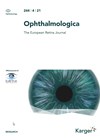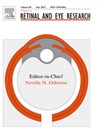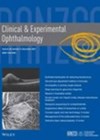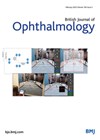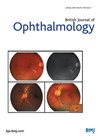
Journal Reviews
Progression of macular atrophy on long-term anti-VEGF therapy for AMD
This retrospective study evaluated the progression of macular atrophy in 53 eyes of 53 patients receiving AntiVEGF Therapy for age-related macular degeneration (nAMD), for at least six years. None of the patients had any macular atrophy (MA) at presentation. MA...
Understanding retinal ciliopathy through Bardet-Biedl syndrome
This is a review article looking at up-to-date understanding and ongoing research in retinal ciliopathies. Syndromic ciliopathies consist of a group of disorders caused by ciliary dysfunction or abnormal ciliogenesis. These disorders have multiorgan involvement in addition to retinal degeneration...
A to Z of X-linked retinopathies
This review article provides an excellent summary of X-linked retinopathies and the corresponding genotype and clinical features. The authors provide a comprehensive overview of each condition in terms of its pathogenesis, clinical features, imaging findings, electrophysiology changes and any current...
Changes in the prevalence of myopia in middle-aged caucasian Australians compared to UK biobank
This article compares rates of myopia and high myopia in large cohorts of caucasian Australians from the Busselton Healthy Ageing Study, the urban Gen1 of the Raine Study, the Blue Mountains Eye study and Melbourne Visual Impairment Project. The former...
Insights in resistant diabetic macular oedema
This article gives a bird’s eye review of the different modalities for the treatment of diabetic macular oedema (DME). The debut of anti-VEGFs has brought a paradigm shift in DME management. This treatment has now become a major breakthrough in...
Effect of syringe-filling technique and risk for endophthalmitis after intravitreal injection of anti-VEGF agents
In this retrospective study the authors compare the risk for post-injection endophthalmitis between different anti-vascular endothelial growth factor (VEGF) agents and syringe preparation technique. This multicentre study included 197,402 injections. The drugs included in this study were three Anti-VEGF agents...
Morphological and functional outcome after subthreshold laser coagulation with a frequency-doubled Nd:YAG laser
Central serous chorioretinopathy; Retinal imaging; Retinal laser coagulation
Clinical features and mortality of endogenous panophthalmitis in China
This longitudinal cohort study aimed to report the clinical features, treatment strategy, and mortality of 15 consecutive patients (16 eyes) with endogenous panophthalmitis (EP) at a tertiary medical centre of the largest eye centre in Northern China. Mean age was...
Evaluation of fluocinolone acetonide in the management of BRC
This is a single-centre, retrospective, intervention study of 15 eyes of birdshot retinochoroiditis (BRC) patients who received Iluvein, with a mean follow-up period of 31 months. Five eyes had previously received dexamethasone intravitreal implant 0.7mg (Ozurdex). Fluorescein angiography (FA) showed...
Air tamponade in pars plana vitrectomy for primary rhegmatogenous retinal detachment repair
The authors report a study aimed to establish the use of air as a tamponade agent for primary rhegmatogenous retinal detachment (RRD) treatment, regardless of the position or the number of retinal breaks. Two hundred and thirty-six eyes of 230...
Traumatic macular holes: reconstructive changes in foveal microstructures and visual predictor analysis, following surgical repair
The purpose of this paper was to investigate the reconstructive changes in foveal microstructures postoperatively and analyse the visual predictors in eyes with surgically closed traumatic macular holes (TMHs). This retrospective study analysed the data collected from 71 eyes of...
Retinal findings in COVID-19 patients
This is a single centre cross-sectional study from Brazil between 20 to 23 May 2020, with a total of 18 patients; nine male and median age was 62.5-years-old. 10/18 (55.6%) had retina abnormalities upon dilated eye examination. Flame-shaped haemorrhages were...

